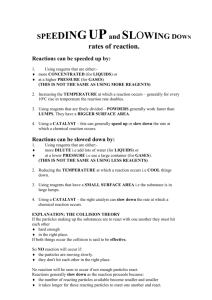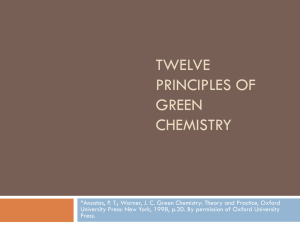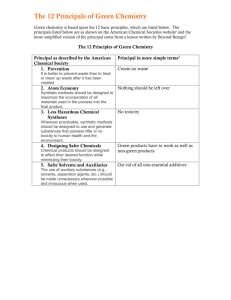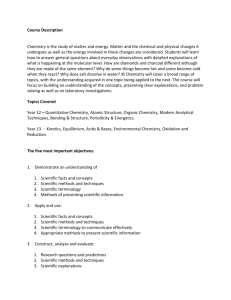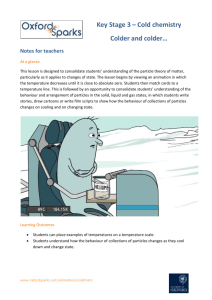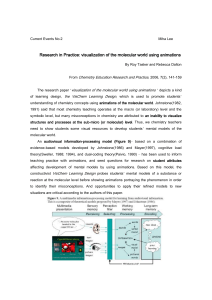Interactive Virtual Chemical Laboratory - hands
advertisement
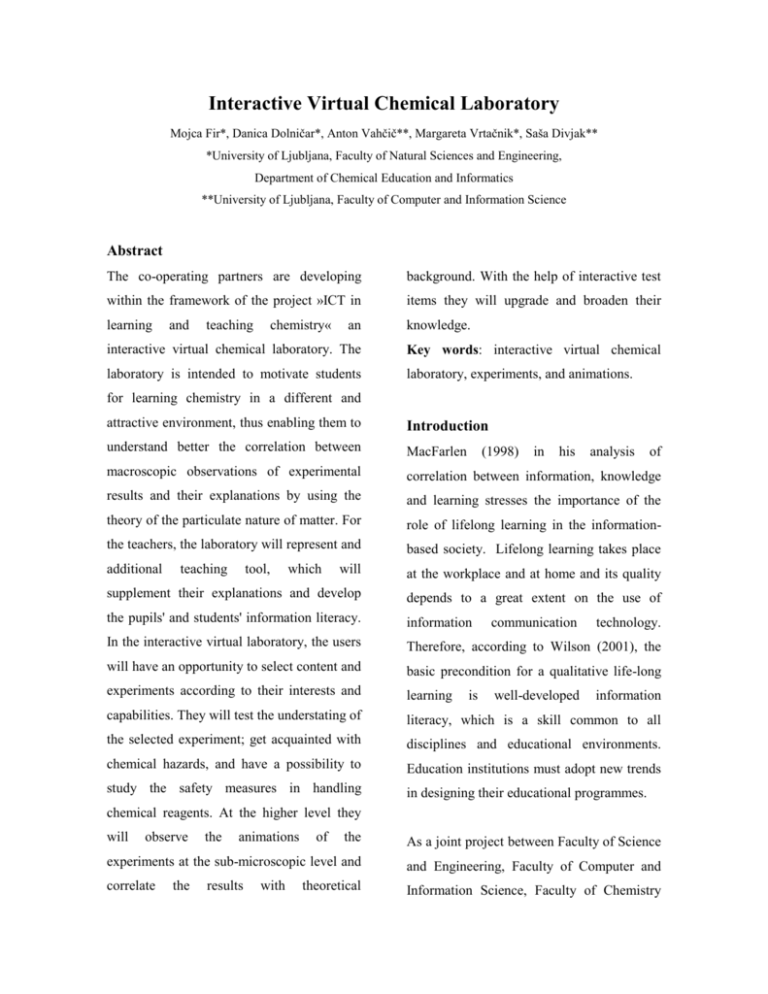
Interactive Virtual Chemical Laboratory Mojca Fir*, Danica Dolničar*, Anton Vahčič**, Margareta Vrtačnik*, Saša Divjak** *University of Ljubljana, Faculty of Natural Sciences and Engineering, Department of Chemical Education and Informatics **University of Ljubljana, Faculty of Computer and Information Science Abstract The co-operating partners are developing background. With the help of interactive test within the framework of the project »ICT in items they will upgrade and broaden their learning knowledge. and teaching chemistry« an interactive virtual chemical laboratory. The Key words: interactive virtual chemical laboratory is intended to motivate students laboratory, experiments, and animations. for learning chemistry in a different and attractive environment, thus enabling them to Introduction understand better the correlation between MacFarlen macroscopic observations of experimental correlation between information, knowledge results and their explanations by using the and learning stresses the importance of the theory of the particulate nature of matter. For role of lifelong learning in the information- the teachers, the laboratory will represent and based society. Lifelong learning takes place additional will at the workplace and at home and its quality supplement their explanations and develop depends to a great extent on the use of the pupils' and students' information literacy. information In the interactive virtual laboratory, the users Therefore, according to Wilson (2001), the will have an opportunity to select content and basic precondition for a qualitative life-long experiments according to their interests and learning capabilities. They will test the understating of literacy, which is a skill common to all the selected experiment; get acquainted with disciplines and educational environments. chemical hazards, and have a possibility to Education institutions must adopt new trends study the safety measures in handling in designing their educational programmes. teaching tool, which (1998) is in his communication well-developed analysis of technology. information chemical reagents. At the higher level they will observe the As a joint project between Faculty of Science experiments at the sub-microscopic level and and Engineering, Faculty of Computer and correlate Information Science, Faculty of Chemistry the the animations results with of theoretical and Chemical Technology and University which the main concepts presented were: College of Health Care a novel Interactive diffusion in comparison with solvatation and Virtual Chemical Laboratory (IVCL) has precipitation, been developed. It can be regarded as a new reactions occurring among ions in a water multimedia educational tool for teachers and solution and among molecules in gaseous or students. It enables the introduction of new dissolved state. teaching strategies development of and higher supports skill differences between the the levels: Production and technologies communication and information literacy, The next step was designing experiments for independent management, visualisation of selected chemical concepts problem solving, individual and collaborative and processes on the macroscopic level. learning, etc. Different versions of video with experiments knowledge were made with a digital camera. Several Scenarios considerations had to be taken into account: In the initial project phase, multiple activities angle, lighting, contrast, hand movement, were designed and were then interlinked with effectiveness of the experiment (quantity of the interactive chemistry laboratory. The reagents used to achieve maximal visual main activity is learning chemical concepts change). Best videos were selected and then and processes on the macroscopic, sub- processed with Adobe Premiere 6.0. Sound microscopic and symbolic levels. Other (narration), subtitles, pointers, symbols and activities are: discovering the properties of pictures reagents and product of chemical reactions, understanding using information on the hazards of the reagents the database, learning chemical software for drawing 2D and 3D chemical were added of to support experiments. the Visual was also incorporated in the clip. structures, and knowledge testing. In parallel, scenarios for the animation of the IVCL was developed in multiple steps. First, experiments on the particle level were the content, corresponding the chemistry prepared. For each scenario we had to define curriculum secondary the properties of particles (i.e. shape, relative schools was selected on the criteria of and absolute size, relative and absolute speed suitability for multimedia presentation, and at the reaction temperature). The main part of applicability to everyday situations. The topic the scenario was divided into a series of selected was "Particles and Reactivity", in scenes. For each scene we had to define the for primary and number of particles, their movement in the properties, environmental and medical impact virtual space, types of collisions, change in and visual and structural representations of size and shape of particles after collision. substances was created. The organization of particles in a crystal lattice, when the reagents or products of the reaction were in solid state, had to be described. The connection between the macroscopic and sub-microscopic world was achieved by including short clips of the experiment, using the zoom effect. In the following step molecular models (molecules, ions and crystal structures) were prepared with the 3D modelling software (Spartan, ChemSketch, MoluCad). Fig. 1: Snapshot from animated chemical The next step was animation and choosing between modern technologies that offer many options how to make a 3D animation. We wished our animation to be interactive. We also wanted to avoid problems with and hardware, software compatibility portability between different operating systems. At the end we decided on Maya software, which can be used for modelling and animation. The limitation of the selected software is that it does not allow reaction Following video production, the animations and the database had to be prepared, various types of interactive exercises, aimed at testing the understanding of the macro and sub-microscopic change, were developed. The user needs to associate the results of the experiment with the particle nature of matter, thus developing skills for information retrieval (database). Explanations and correct solutions are provided for every exercise. interactivity, but the film we created can be used in different systems. With Maya we made short animated films, which we later combined with sound, subtitles, pictures and other elements to create the final version of film. The database on substances with the information on physical and chemical Virtual laboratory on Web In the final phase the online portal of the Virtual interactive chemistry laboratory was set up. Interactive representations of chemical structures and videos require specific freely available plug-in software. To reach the broadest spectrum of users, both the Library user education: powerful learning, English and Slovenian version were created. powerful partnership. Lanham, London: The The web address of the laboratory is Scarecrow Press, pp. 1-17. http://www.ntfkii.uni-lj.si/crp2eng/frame.htm and http://www.ntfkii.uni- lj.si/crp2-slo/frame.htm The content of the virtual laboratory can be accessed from different entry points: experiments (micro/sub-micro level), media elements (videos, animations, 3D molecular models, images), interactive exercises, reagent/product database. The laboratory is intended to teach students about chemical reactions and processes on three different macroscopic, symbolic levels of explanation: sub-microscopic level. For the and the teachers, the laboratory represents an additional teaching tool, supplementing their explanations and at the same information time literacy. developing The use students' of the laboratory encourages logical thinking, by correlating the conclusions made from observation with the theoretical background. References MacFarlane, A., 1998: Information, Knowledge and Learning. Higher Education Quarterly, vol. 52, no. 1, pp. 77-92. Wilson, A. W., 2001: Information literacy: fluency across and beyond the university. In:
